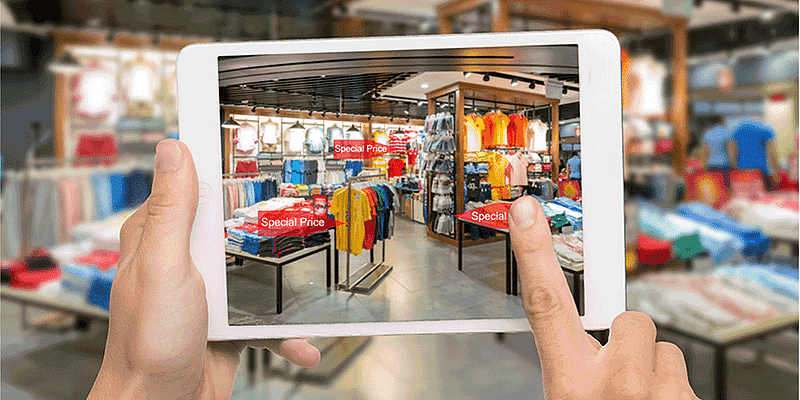Over the last few years, Digital Native brands (DNBs) have risen to prominence, fueled by the growth of ecommerce and catalysed by the COVID pandemic.
Further, traditional brands are rapidly losing online market share as DNBs are going digital, establishing themselves as market leaders.
Playing catch up, traditional brands are taking the battle online with strategies, including acquisitions, launching competing brands, and strengthening their D2C capabilities.
Rise and rise of DNBs
The growth of ecommerce platforms like Amazon and Flipkart led to the emergence and synergistic growth of digital native brands.
The trend started with smartphone players like Xiaomi and OnePlus, who launched their products only online and supported by platforms that needed exciting products to grow their customer base.
What seemed like a necessity to bypass the challenge of building a pan-India sales network turned out to be a masterstroke. After building scale and a strong brand, these digital brands also expanded to offline channels. Today, Xiaomi is the largest smartphone brand in India, beating established leaders like Samsung.
The rise of ecommerce provided a new playbook for rapid brand building. The online space is quite different from the world of intermediaries, distributors, and kiranas.
DNBs are lean product-marketing machines characterised by their agile approach and deep knowledge of their customer base. Having an online presence also has a significant impact on offline sales, as today’s tech-savvy consumers discover and research brands through social media, ecommerce, and general online searches.
Since then, DNBs have emerged strongly in other electronics categories, not just to lead the digital space but also to become market leaders.
In televisions, OnePlus and Xiaomi have higher online penetration and comparable market share to legacy brands such as LG, Sony, and Samsung. Similarly, boAt, Noise, and Fire-Boltt are far ahead of traditional brands in the hearable and wearable segment.
Having scaled, DNBs are now expanding across categories and formats by leveraging their brands and customer communities. They are naturally evolving into offline space, with many established DNBs deriving 15-35% of their sales from offline channels.
Ecommerce growth trends
About 40% of overall ecommerce sales are controlled by DNBs, and this share is increasing annually. Notably, as the share of ecommerce in a category increases, so does the power of DNBs.
More than 50% of smartphones and electronics sales are online, which has resulted in a fundamental change in the market structure and dominance of DNBs.
Redseer Strategy Consultants’ research suggests that while the overall retail market is expected to grow at a rate of 10% from $950 billion in 2022 to $1,360 billion in 2026, the online retail segment will witness a CAGR of about 30%, implying that, except for grocery, over 50% of growth in most major categories will come from online sales.
By 2026, we expect that major categories, including appliances, fashion, home, and beauty, will see 25-35% of their annual sales coming from the online channel, which provides an opportunity for DNBs to strengthen their share in these categories.
DNBs are mostly young brands still growing rapidly, gaining scale and capabilities. We expect existing brands to grow stronger and many more DNBs to emerge in the next three years to capture a sizeable online share across retail categories.
The advent of roll-up commerce companies, which acquire and nurture young digital brands, will enable many more DNBs to become strong competitors to traditional brands.
Additionally, platforms like Flipkart, Myntra, Nykaa, and Bigbasket are also aggressively pushing their private label digital brands, gaining a significant online share.
Established retail brands across appliances, fashion, beauty, and even FMCG, with a sizable market share in brick-and-mortar retail, have new challenges to conquer and need to raise their game to keep up with the digital natives.
They must build a strong online presence or they will see lower growth and risk losing market share.
Traditional brands stepping up to compete online
Traditional incumbents in the market recognise the challenge from DNBs while acknowledging the opportunity for expansion.
However, our experience working with numerous companies suggests that traditional brands have a difficult time competing on equal footing with DNBs.
When ranked on our ecommerce excellence framework, DNBs lead on a range of critical success factors.
In essence, DNBs are lean marketing organisations, highly efficient in building growth flywheels on Amazon, Flipkart, and other ecommerce platforms. They have greater agility when it comes to product offerings, pricing, and crafting customer experience.
DNBs also have a greater propensity towards experimenting and taking risks, thus generating innovative solutions for their target segments.
Traditional brands—regardless of being the incumbents in the offline space—have lower agility when it comes to adapting their SKUs, pricing, marketing approach, and investment thesis for online platforms.
As broad-based brands with a large presence in general trade, they tend to cast a wider net in the market rather than aligning to the specific needs of the key online segment, which is Gen-Z and millennials.
Therefore, a key approach for traditional players is to acquire and make strategic investments in digital brands to target specific customer cohorts.
Across FMCG and fashion, companies like Marico, Unilever, and Aditya Birla Fashion are acquiring DNBs. They have also launched their digital brands, unshackled by the legacy ways of working.
At the same time, traditional players have strengthened their D2C capabilities through their portals, technology, and supply chain while retaining their original brand identity.
The battle is cast, and traditional players need to build significant online capabilities and market share in the next two years.
The window of opportunity will diminish thereafter, as many DNBs will acquire substantial scale, become too expensive to buy, and threaten the traditional players on their turf. Round 1 has definitely gone to the DNBs.
Mohit Rana is a Partner at Redseer Strategy Consultants.
(Disclaimer: The views and opinions expressed in this article are those of the author and do not necessarily reflect the views of YourStory.)










